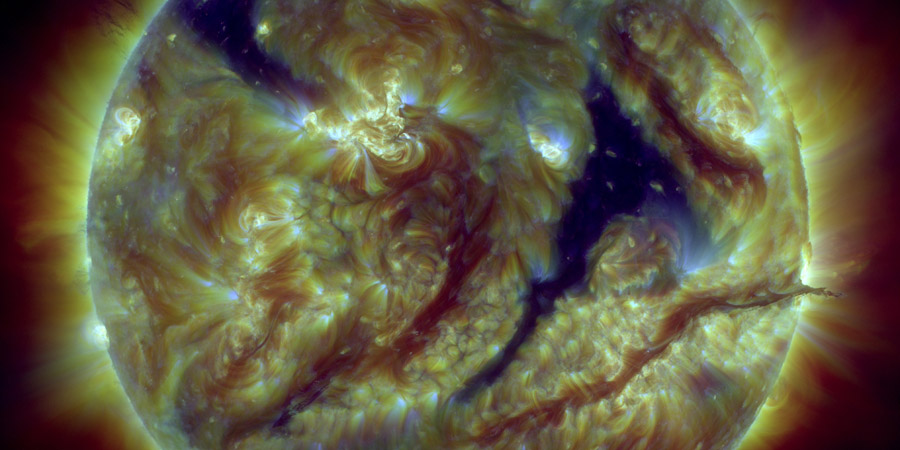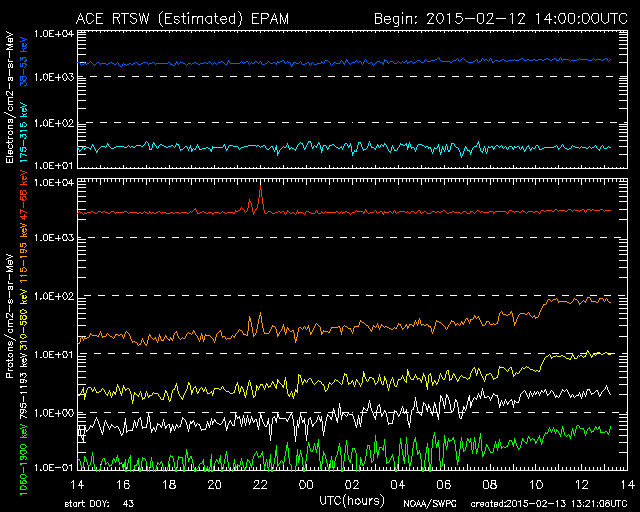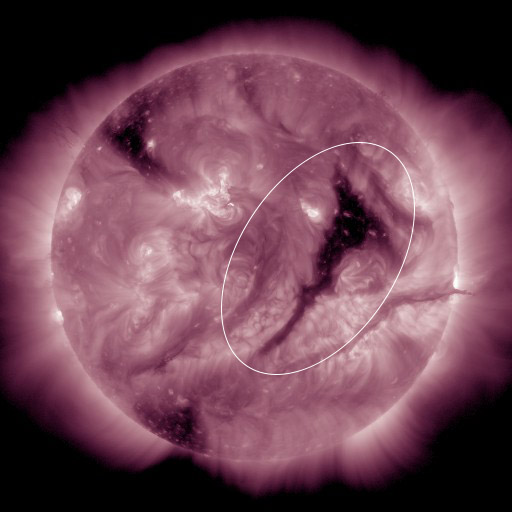CME watch, coronal hole stream incoming
Friday, 13 February 2015 13:30 UTC

We are currently awaiting the possible arrival of a glancing blow coronal mass ejection passage related to an M2.4 solar flare from 9 February. The coronal mass ejection was expected to arrive early this morning but there are no signs in the solar wind data that suggest that the coronal mass ejection has arrived. The low energy protons as measured by ACE EPAM are slightly elevated which could suggest that the coronal mass ejection has yet to come. Any impact (if any) will likely be minor and it is unlikely that it can cause a geomagnetic storm but you should nonetheless be alert in the coming hours for a possible impact.

Image: Low energy protons showing a minor rising trend indicating that the coronal mass ejection could still arrive. Credit: ACE EPAM.
Coronal hole stream incoming
There is however a backup plan for those wishing to see some aurora in the coming days should the coronal mass ejection be really weak or perhaps even miss us. A coronal hole has crossed the central meridian and an enhanced solar wind stream could arrive at our planet as early as tomorrow. IMF Bt values of 15nT to 20nT are possible followed by solar wind speeds in the 500 to 600km/s range. Active geomagnetic conditions (Kp4) will be possible when the stream arrives, with a slight chance for minor G1 geomagnetic storm conditions if the direction of the IMF cooperates. High latitude sky watchers should be alert for aurora in the coming days.

Image: This coronal hole will likely cause enhanced solar wind conditions near Earth the coming days. Credit: NASA SDO.
Thank you for reading this article! Did you have any trouble with the technical terms used in this article? Our help section is the place to be where you can find in-depth articles, a FAQ and a list with common abbreviations. Still puzzled? Just post on our forum where we will help you the best we can!
Latest news
Latest forum messages
Support SpaceWeatherLive.com!
A lot of people come to SpaceWeatherLive to follow the Sun's activity or if there is aurora to be seen, but with more traffic comes higher server costs. Consider a donation if you enjoy SpaceWeatherLive so we can keep the website online!

Space weather facts
| Last X-flare | 2024/03/28 | X1.1 |
| Last M-flare | 2024/04/23 | M3.0 |
| Last geomagnetic storm | 2024/04/19 | Kp7 (G3) |
| Spotless days | |
|---|---|
| Last spotless day | 2022/06/08 |
| Monthly mean Sunspot Number | |
|---|---|
| March 2024 | 104.9 -19.8 |
| Last 30 days | 125.4 +21.1 |


